Best SSD for Operating System
There’s no reason why your system or video game console shouldn’t have one of the greatest solid-state drives available today. Solid-state drives are now quite affordable, even in huge capacities, and provide magnitude speed improvements over traditional hard drives.
SSDs exist in various sizes and shapes, from M.2 NVMe SSDs to SATA units of varying sizes. But don’t worry if you’re unfamiliar with the technical jargon, which could be a minefield to navigate. Not only will this buying guide assist you, but T3 has also prepared this guide on SSD technology, which breaks it down so you can make the best storage decision for you.
Which SSD you select will determine how you intend to attach it to your device. Most SSD comes with external USB drivers, but internal models in the form of cards or sticks are also available. You have to verify your device’s and motherboard’s specifications to see which SSDs are compatible with the system.
In this article, you will learn about the best SSD for the operating system. But before discussing the best SSD, you must know about the SSD.
What is SSD?
SSD stands for a solid-state drive. An SSD is a non-volatile memory storage medium that holds and accesses data. Unlike a hard disk, it has no moving components, providing benefits such as faster access time, noiseless operation, improved reliability, and lower power consumption.
SSDs have become suitable replacements for regular hard drives in both desktop and laptop computers as prices have decreased. SSDs are also ideal for netbooks, nettops, and other applications with limited storage needs.
Features of SSD
There are various features of SSD. Some main features of the SSD are as follows:
1. No Moving Parts
The Solid-state drive (SSD) doesn’t have a spinning platter to move read and write heads or other moving parts like mechanical hard drives. Instead, information is stored in integrated circuits. SSDs are unaffected by socks, bumps, or vibrations. In addition to cooling fans and optical disk drives.
2. Power Consumption
SSD drives consume between 30% and 60% of their power. It consumes less energy than an HDD drive, saving an unusual 6 to 10 watts of power.
3. Fast Speed
Solid-state drives have 100 time’s greater throughput and instant access times than hard disks, resulting in faster boot times, file transfers, and overall performance. HDDs can only access data faster the closer it is to the read/write heads, whereas SSDs can access all regions of the drive at once.
4. Mobility
SSDs are smaller and lighter than earlier generations of disks. Today’s ultra-thin computers, tablets, and other mobile gadgets are achievable.
5. Cool Running
SSDs are energy-efficient storage enhancements for your desktop or laptop computer. It uses extremely little power to operate, resulting in much less heat emission from your computer.
Top SSD for Operating System
There are various SSDs for Operating Systems. Some of the main SSD for Operating Systems are as follows:
- Samsung 970 Evo Plus
- Samsung 980 Pro
- Intel Optane 905P
- SK Hynix Gold P31
- Corsair MP600 Pro LPX
- WD Black SN850
- Kingston KC3000
- Crucial P5 Plus
- Sandisk extreme portable SSD
- Corsair MP400
- Silicon Power US70
- Samsung T7 SSD
- WD Black P50
- Samsung 860 Pro
- Sabrent Rocket 4 Plus
Samsung 970 Evo Plus
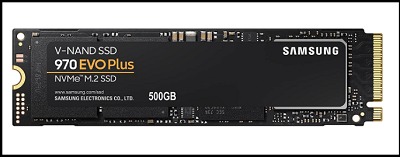
It is another important SSD for the OS. Samsung is no stranger to producing some of the greatest SSDs, so we were shocked when it released the Samsung 970 Evo Plus with faster speeds and new technology. This SSD is undoubtedly one of the fastest drives available on the market, but the fact that Samsung is selling it at a low price. Because of its low price, this drive is easily recommended as the finest SSD for everybody.
The 970 EVO Plus is built on Samsung’s 96-layer V-NAND memory, and it’s a very appealing SSD, especially since the 256GB storage capacity starts at a low price. The read and write rates are 3,500 and 3,300 megabytes per second. It’s quick, though not as quick as PCIe 4.0 SSDs. If you have an older system, it is acceptable. The 970 EVO Plus shares several features with other Samsung NVMe SSDs, such as the five-year warranty and overall durability.
Samsung 980 Pro

It is another important SSD for the operating system. If you may afford to spend huge money on a storage device, the Samsung 980 Pro might be the best SSD for you. It’s the fastest SSD, so it’s ideal for future-proofing your system, particularly if you choose the 1TB version. While it isn’t the cheapest SSD on the market, it provides the same level of performance at a lower price than its competitors. Keep in mind that a Gen4 SSD is required to fully utilize its speed.
Intel Optane 905P
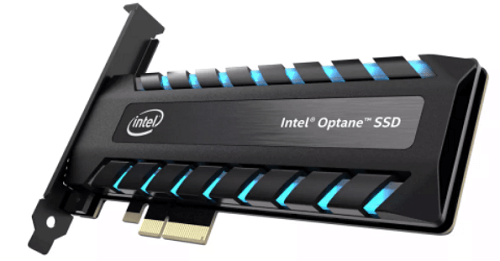
It is another important SSD for the operating system. The Optane SSD 905P isn’t a beginner, but it’s one of Intel’s quickest drives, with a random read rate of 575,000 IOPS and a random write rate of 555,000 IOPS. However, it has sequential read and writes speeds of 2,600 MB/s and 2,200 MB/s, and it might appear a pedestrian compared to the Samsung 970 Evo and WD Black NVMe SSDs.
Sk Hynix Gold P31

It is another important SSD for the operating system. It is a better solid-state drive, especially considering its recent price reduction. It impresses users with its consistent performance, fast speeds, large capacities, and reasonable price. It could be a good SSD if you seek a cost-effective and capable SSD.
It uses various impressive tricks behind-the-scenes to ensure stability and lifespan, and it’s worth mentioning that it is the company’s first stick with a 128-Layer 4D TLC NAND flash. Essentially, the latest type of flash memory should give an improved performance while consuming less power.
Corsair MP600 Pro LPX

It is another important SSD for the operating system. It blazes out of the gate with some of the quickest performance ever seen from a user SSD. It outperforms the Samsung 980 Pro and WD Black SN850 in sequential benchmarks. It does not lead the pack in random operations, but it is not far behind. It delivers high speed at a modest 16 cents per GB price, and it also comes with a low-profile cooler that makes it even more difficult to match. The real kicker is that Corsair has variations with larger heatsinks that are slightly less expensive.
WD Black SN850

It is another important SSD for the operating system. WD has stepped up its game with the WD Black SN850. This SN750 update moves from PCIe 3.0 to PCIe 4.0, and it comes with the corresponding speeds. Whereas the previous drive may achieve sequential read speeds of over 3,500MB/s, the SN850 more than doubles that to 7,000MB/s. It comes with 5,300MB/s write speeds. These are speeds comparable to Samsung’s 980 Pro SSD.
It uses 96-layer, TLC 3D NAND and offers pretty reasonable pricing for a 1TB drive without sacrificing longevity by using QLC NAND. You’ll be ready to plunge into games in no time with the WD Black SN850’s exceptional speeds. Microsoft’s Direct Storage allows data to be sent straight from SSDs to graphics cards, and you’ll want to make sure your SSD doesn’t become a bottleneck.
Kingston KC3000

It is another important SSD for the operating system. Kingston’s latest effort is a fantastic solution for anyone searching for a Gen 4 drive in a PC or PS5, along with Corsair and Seagate. The KC3000 performs well in various demanding applications, and the heat spreader is small enough to fit into Sony’s next-generation console.
Some minor drawbacks, like the pricing, lack of hardware encryption, and a slight power consumption concern, place it behind the competition. It’ll be a good drive if you see it on sale anywhere.
Crucial P5 Plus

The Crucial P5 Plus provides quick speeds, strong endurance, and greater value. It has 1TB of storage space and a sequential read speed of 6,600MB/s, making it the best option for the best SSD for under $150. This NVME SSD uses PCIe 4.0 technology, making it substantially faster than those using PCIe 3.0. It is slightly expensive, and it edges out the other drives.
It is ideal for gamers, creative content creators, and those with heavy workloads. Furthermore, the Crucial P5 Plus meets the PS5’s minimal spec needs to work with the PS5 when used with the heat sink. The device will be faster, contain more data, run more efficiently, and consume minimal energy thanks to enhanced controller technology and Micron Advanced 3D NAND. It comes with a 5-year guarantee and 600 total drives written. It’s the ideal component to pair with any low-cost CPU and motherboard in your next gaming PC build.
Sandisk Extreme Portable SSD
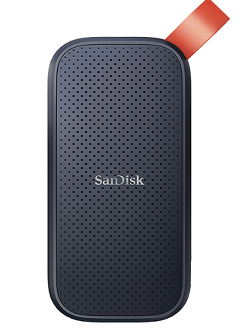
It is another important SSD for the operating system. It is the best SSD if you require an external drive that you may take almost anywhere. It is designed to withstand the elements, it is small enough to fit on a keychain, and it has a storage capacity of up to 4GB, which is enough for most users.
This SSD provides excellent performance with USB 3.2 Gen 2 support, read and write speeds of 1,050 MB/s and 256-bit AES hardware encryption for added security. The IP55-rated protection comes at a price, but many SSD consumers will be happy to pay for it.
Corsair MP400

It is another important SSD for the operating system. The Corsair MP400 SSD is a gem. It provides a lot of storage for a low price, especially for SATA SSDs, allowing you to get the most out of your money. Although, it isn’t a SATA solid-state drive. It’s a PCIe NVMe SSD that isn’t extremely fast. Its speeds are comparable to those of many other PCIe 3.0 SSDs, and its price is lower. Its lesser endurance is essentially the only disadvantage, but it won’t be a big deal for most people who aren’t producing a lot of data.
Silicon Power US70

It is another important SSD for the operating system. The Silicon Power US70 reduces the cost of PCIe 4.0 SSDs to a more manageable level. It’s nicely quick for a value-oriented drive and has plenty of endurance, but some competition can undercut it on price while outperforming it in terms of speed. It doesn’t aid that it’s mounted on a strange blue PCB that won’t work with many motherboards.
Samsung T7 SSD
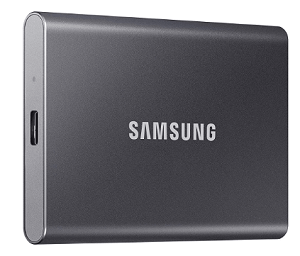
It is another important SSD for the operating system. It feels like a solid piece of kit from the moment you take it up, with its matte texture finish, rounded edges, and incredibly tiny size. It is available in three colors: black, red, and blue. It is more visually appealing than many comparable smartphones on the market.
In terms of critical specifications, the capacity options grow to 2TB, and you get 1,050 MB/s reads and 1,000 MB/s write speeds across USB 3.2 Gen 2 ports. It is also an SSD drive that may switch between devices and OSs.
WD Black P50
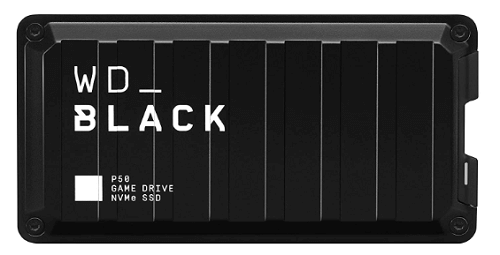
It is another important SSD for the operating system. Gamers will be particularly interested in the WD Black P50 external SSD, thanks to its high data rates, huge capacities, and rugged good looks. Although, the stylishness of the SSD is truly in the eye of the beholder. The robust, ridged shell around the SSD protects it from bumps and scrapes.
Transfer rates of this SSD can reach 2,000MB/s, but you’ll need a very particular hardware setup to do so. Specifically, USB 3.2 Gen 2 on the device to which you connect the drive. You may expect long-term dependability with the Western Digital name on the drive.
Samsung 860 Pro
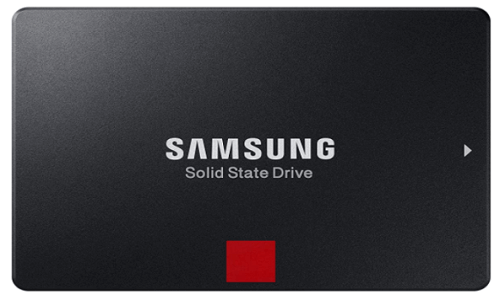
It is another important SSD for the operating system. Although SATA 3 isn’t as popular as it once was, the Samsung 860 Pro shows that the aged interface still has a lot of life left in it. It’s one of the best SSDs for anyone still using SATA 3. It comes with a storage capacity of 4TB and transfer speeds approaching the theoretical maximum of the SATA 3 interface. It also provides better durability and security.
Sabrent Rocket 4 Plus
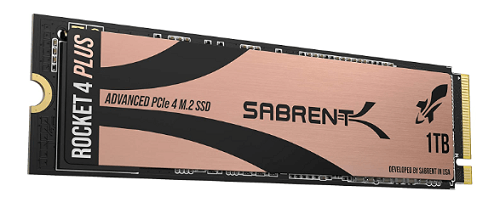
It is another important SSD for the operating system. Sabrent’s Rocket 4 Plus was one of the first PCIe 4.0 drives to hit the market, and it’s still going strong. It has sequential read and writes rates that are only slightly slower than the XPG Gammix S70, and it utilizes the same controller as the Kingston KC3000. Although it has a lower TBW rating than Kingston’s drive, it performs better. If you need the greatest storage space possible in one M.2 slot, the Rocket 4 Plus is available in capacities of up to 8TB. It will cost you a lot of money, but those who need it will pay for it.
Conclusion
In this article, you have seen there are several best SSD for the operating system available. All of the SSD are better in performance and reliability. So, you may choose the best SSD according to your needs.
